Flash Freezing Sunny Side Up Eggs
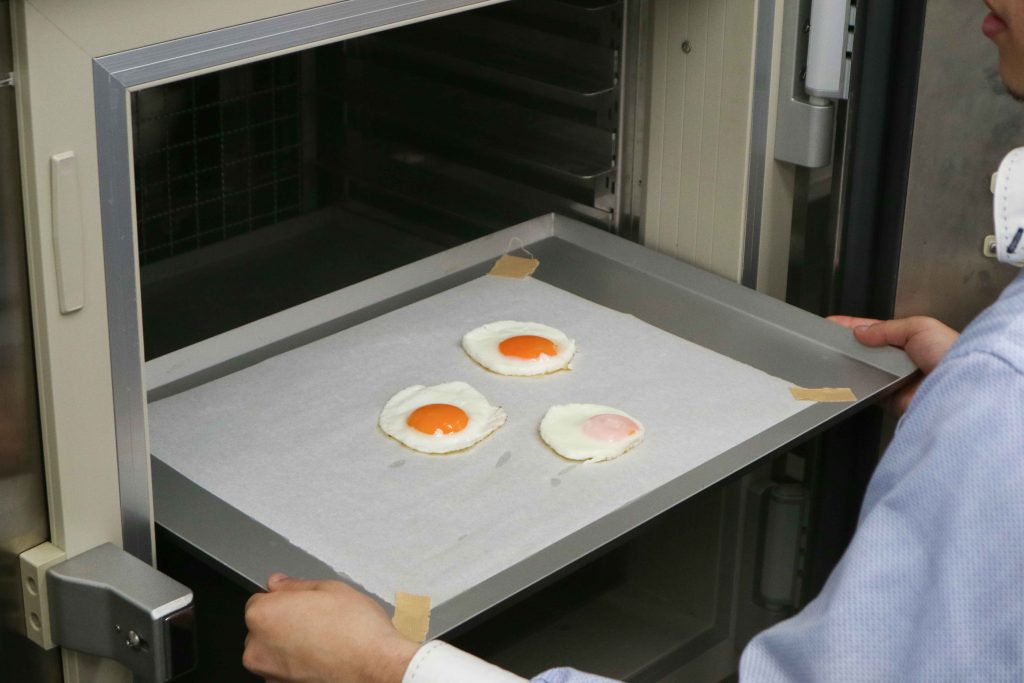
Flash Freezing Test: Sunny Side up Eggs?
When talking about freezing eggs whether they are bowled, raw, or fried eggs, in most cases freezing them is not recommended as the eggs will loss the original flavor, over moisturize, and in most cases lose most of the original texture. That is where flash freezing technology comes in. With the next generation flash freezers, will one of the hardest products to freeze, sunny side up eggs, be still be able to maintain the original make up after being going through the flash freezing process?
We were curious so we conducted a flash freezing test to answer this question. The test results are noted below.
Preparing process
For this freezing test we first had to make sunny side up eggs from scratch using fresh eggs.
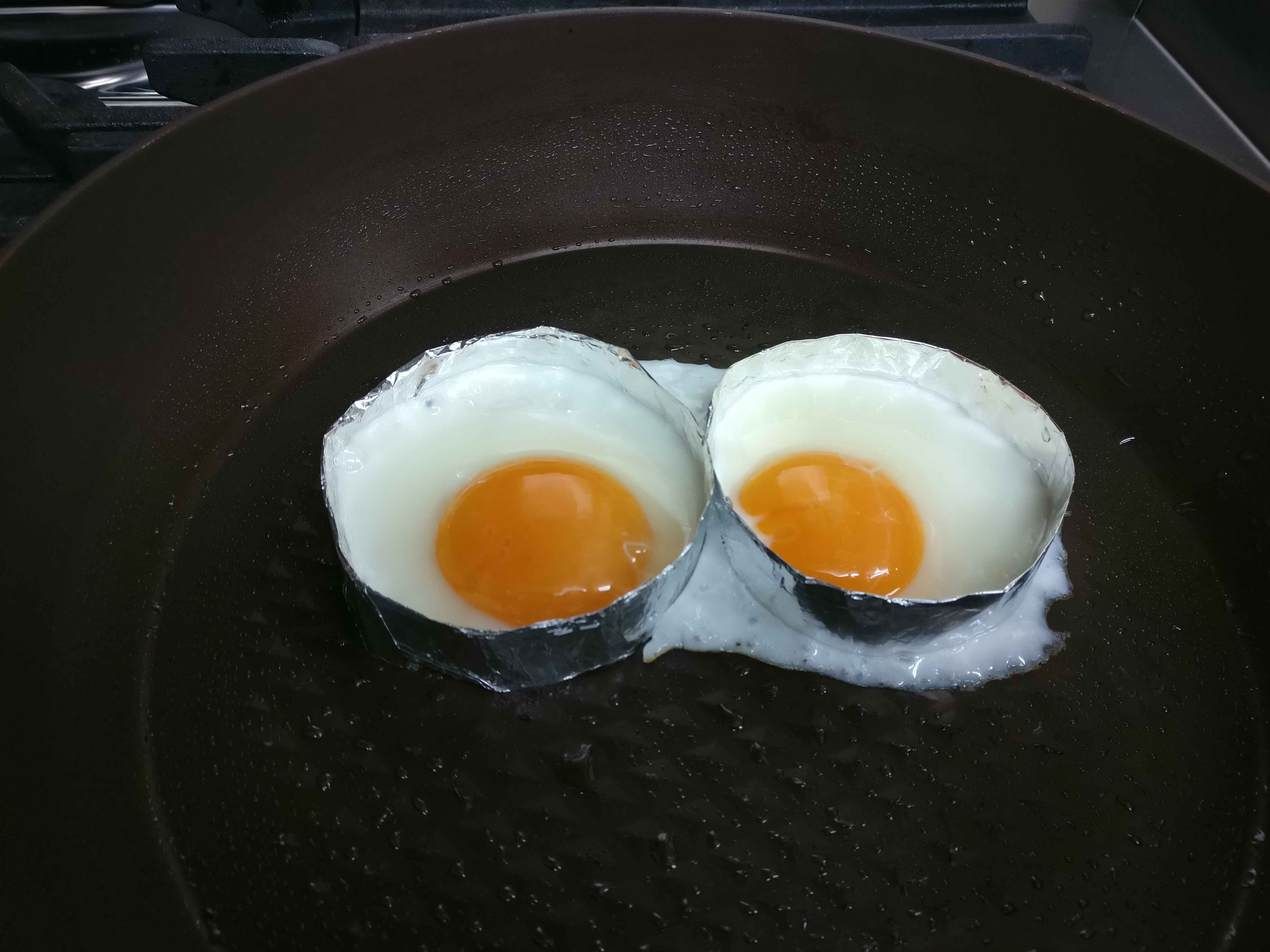
In this case we cooked 2 different types of eggs. One was just a regular sunny side up egg while the other we added water and used a cover for a few minutes.
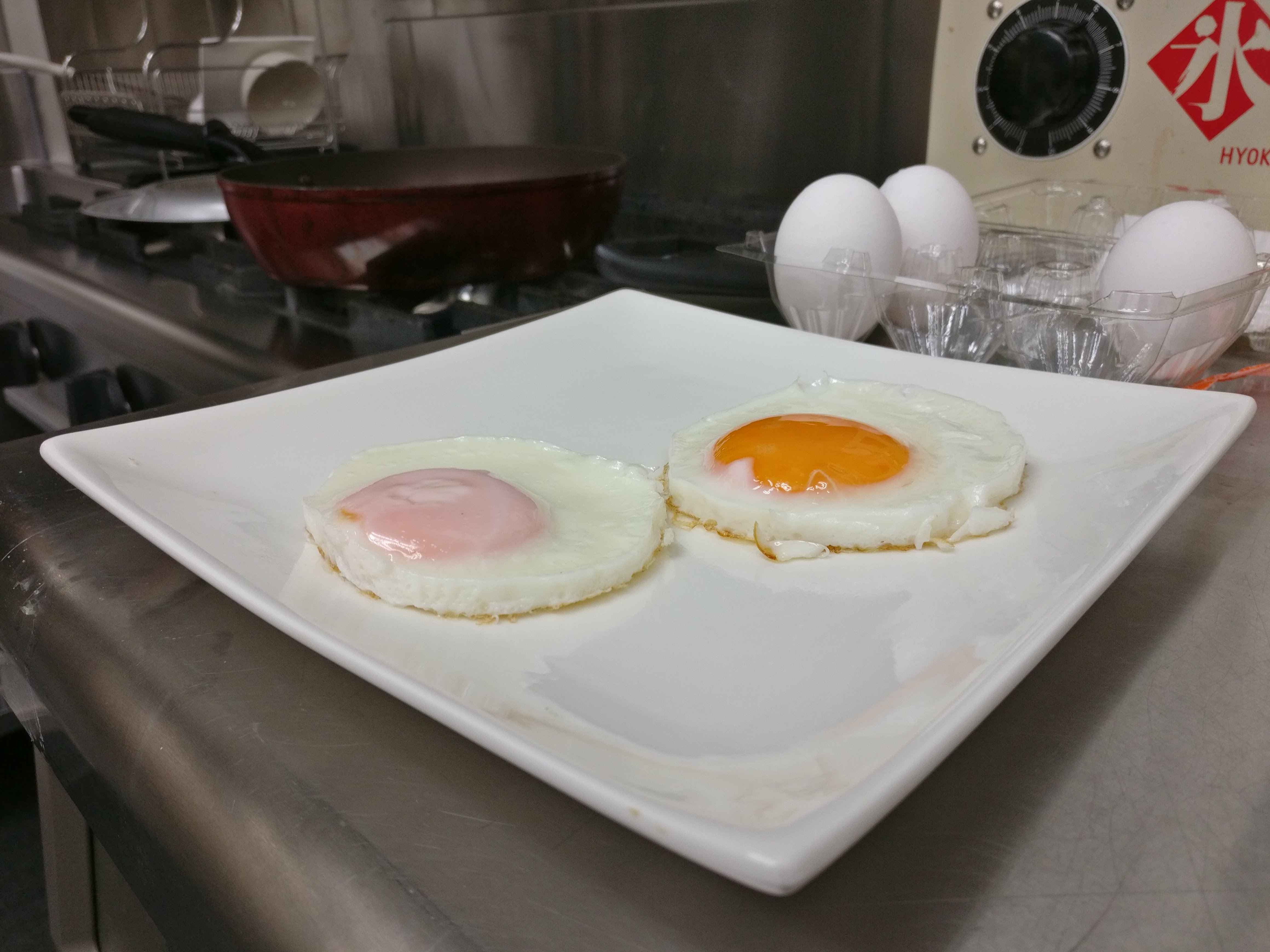
Usually in order to freeze cooked products, there needs to be a waiting period for the products to be cooled down. But with the flash freezer warm or hot products (up to 93 C degrees) allowing for instantaneous freezing. This will allow a business to skip the cooling down period and directly freeze the products after they have been cooked. Saving both time and money as businesses do not have to worry about creating a cooling process for the product before it goes in and is flash frozen.
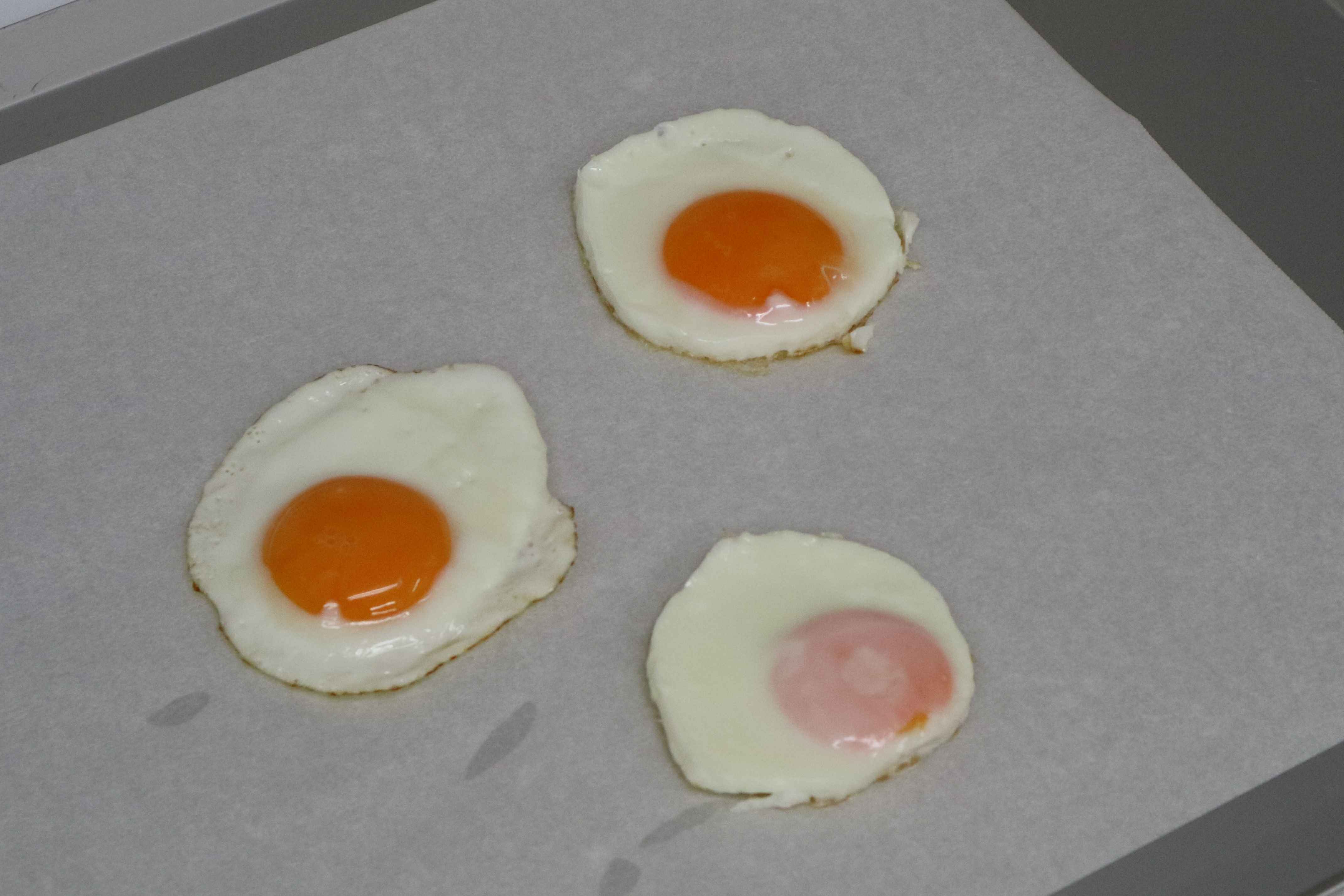
Now the eggs are ready to be directly frozen. Let’s see how the flash freezing process is conducted.
Flash Freezing

We proceeded to insert the eggs in the flash freezer.
Within the first few minutes you can see that the egg is already frozen on the surface. In this freezing test the flash freezer was prepared before hand and the temperature of the freezer was at around -35C Degrees when the freshly cooked sunny side up eggs were inserted. The inlet temperature of the eggs were at around 70 C. The eggs took roughly 13 minutes to be completely frozen and have an outlet temperature of -18 C.
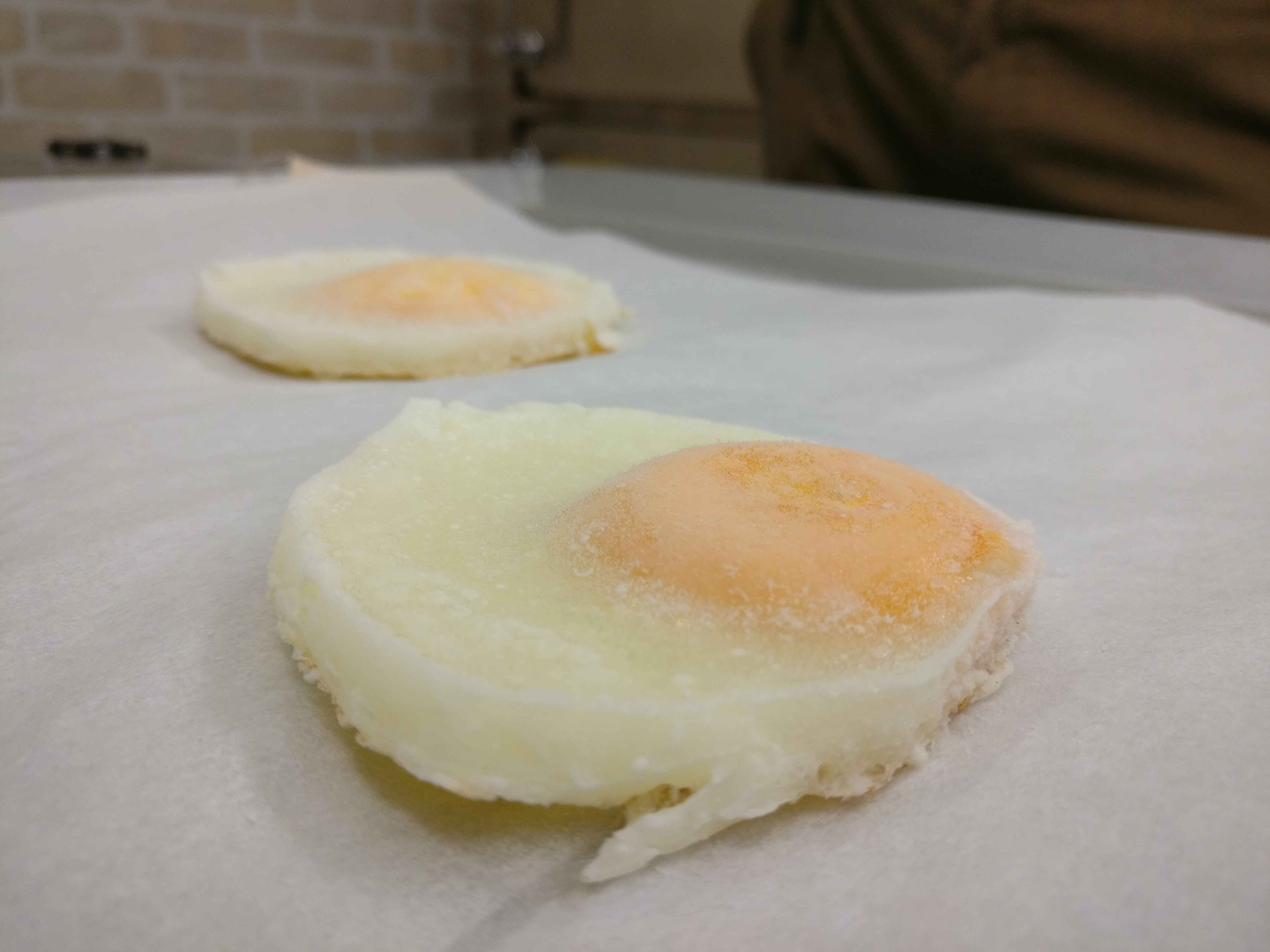
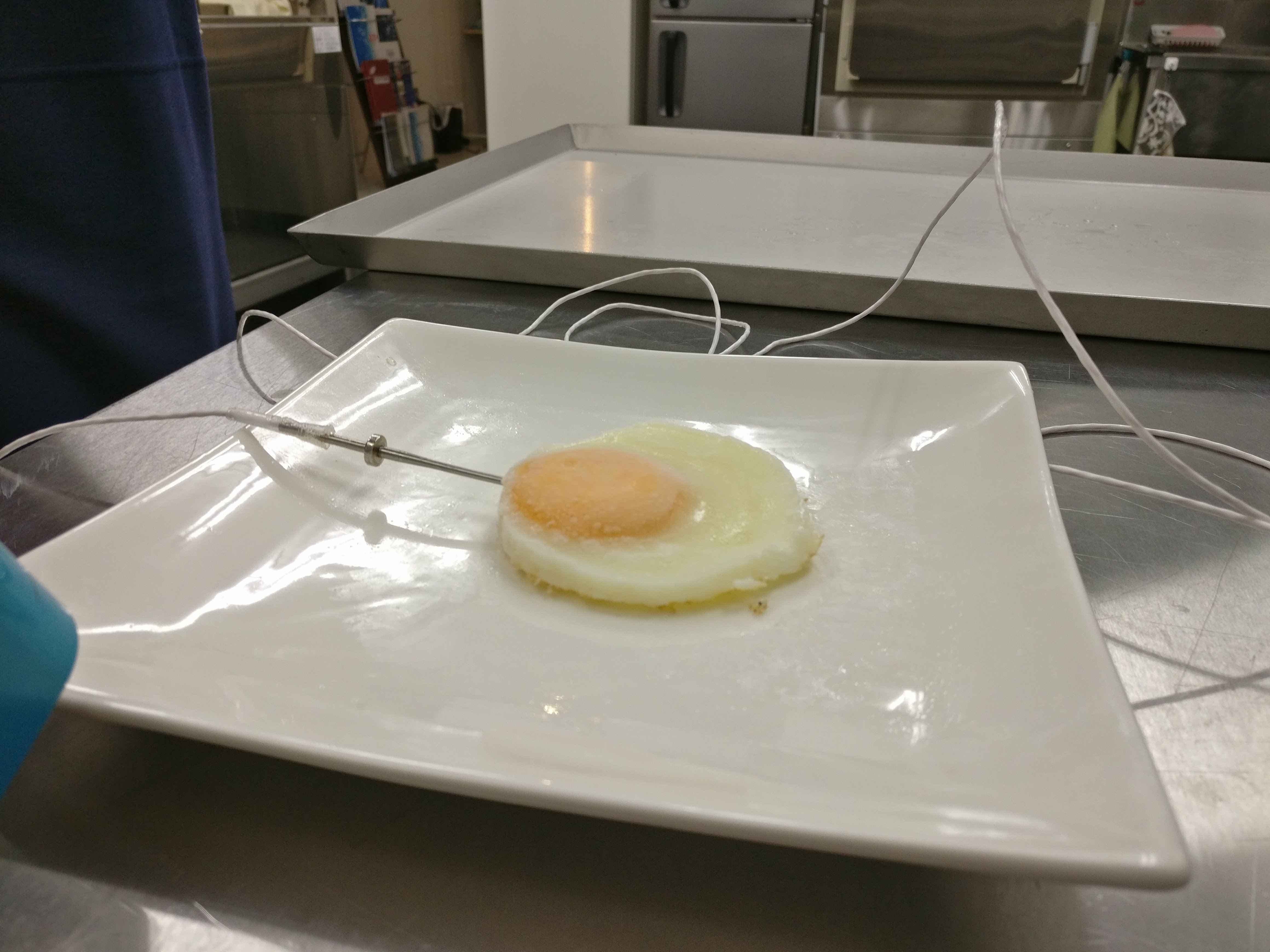
After we took out the 3 eggs out of the flash freezer, we went to the next step in the flash freezing test process. Defrosting the eggs.
Defrosting
After the sunny side up eggs were flash frozen, next we wanted to defrost the eggs and see which defrosting method would be best suited for sunny side up eggs.
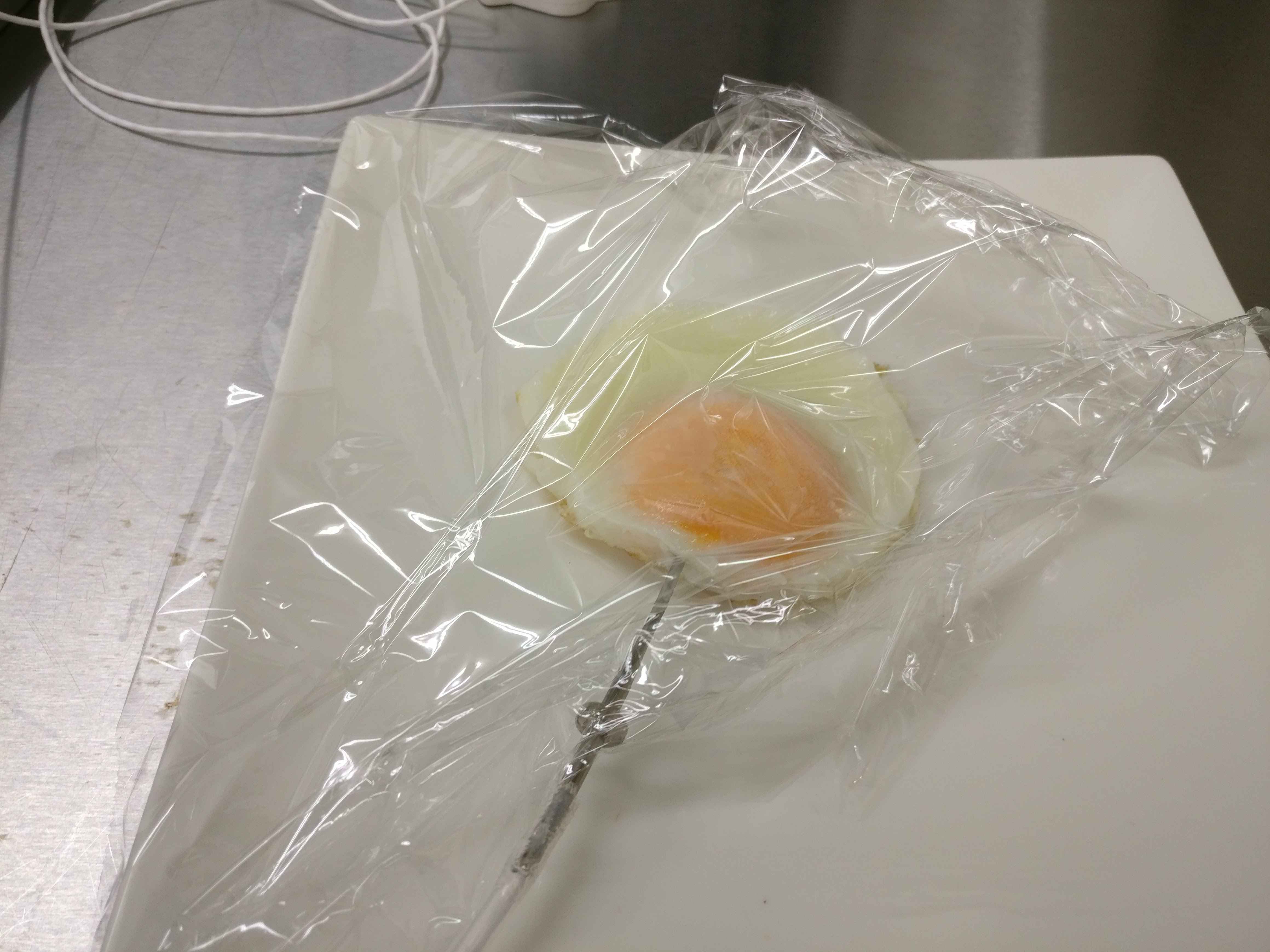
We decided that after flash freezing the eggs, defrosting one via room temperature and the others via regular refrigerator would allow us to see if there are any differences in the contents quality if defrosted in two completely different environment.
The egg that was defrosted in a room temperature environment defrosted the flash frozen egg in roughly 1 hour and 30 minutes. The eggs that were defrosted in the refrigerator took roughly 4 to 6 hours (over night) to completely defrost.
Results
After the eggs were completely defrosted we then checked for any moisture, texture, flavor, and overall drip loss of the product.
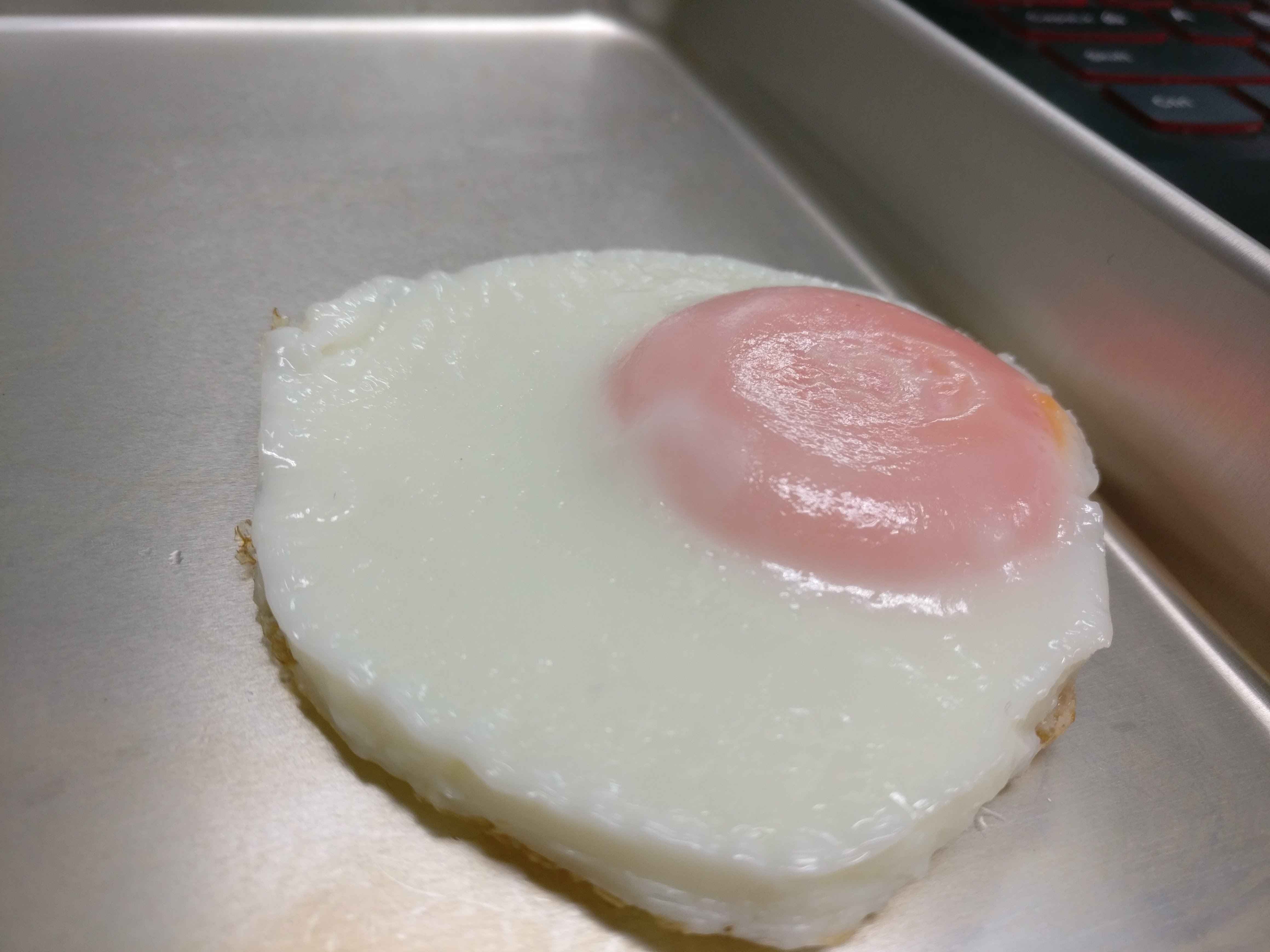

When we took out the flash frozen egg that were defrosted and cut it in half. We saw almost no extra water dripping out of the egg white. This is an important point as other conventional freezers, blast freezers, and even high-end liquid nitrogen freezers all have a problem of leaving excess water moisture in the egg white. The Texture was not changed throughout the flash freezing and defrosting process.
We personally ate one of the defrosted flash frozen sunny side up eggs to see if the flavor of the egg white, and more importantly the egg yolk, changed. The end result were the following.
The egg white flavor was unchanged but the yolk’s flavor actually seemed a tad bit richer. The yolk it self became a little bit more past like, but flavor was not negatively affected.
Overview
Overall the flash freezing test was a success. The cooked sunny side up eggs were fully cooked and were still quickly frozen to -18 C from an original inlet temperature of 70C degrees in 15 minutes. Other freezers are just not able to properly freeze products in such high temperatures as the egg would be covered in excess frost and would take a longer time to freeze.
I hope you found this flash freezing test information helpful. If you have any other questions or are interested in learning more about flash freezing technology, please do not hesitate to contact us via the contact page, blue mail toggle, or you can contact us directly via [ support.en@flash-freeze.net ]
